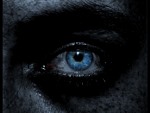Eugene Saenger – He Radiated Innocent Victims
By James Donahue
When he died at the age of 90 in 2007, Dr. Eugene Saenger was lauded by the American media as a "pioneer
in radiation research and nuclear medicine" and his 30-plus years as a professor at the University of Cincinnati.
The American College of Radiology even awarded Saenger a gold medal in 1994 for "career achievements"
in his field.
His accolades stemmed around Saenger’s government financed experiments with unwitting patients
with radiation poisoning during the Cold War years. Between 1960 and 1971, after the development of the atomic bomb, the U.
S. military wanted to find out how much radiation a human body could take, and whether the world could survive a nuclear catastrophe.
Saenger, who headed the top-secret experiment, chose 88 cancer patients, all of them poor and most
of them black, as his subjects. These people were told the testing might help them even though everyone in the medical profession
knew even then that radiation exposure was not a valid treatment for cancer.
The test victims were never asked to sign consent forms, and they never knew that the Pentagon was
financing the study which involved full body exposure to heavy doses of radiation.
The patients were zapped with about 20,000 X-rays worth of radiation for one hour just to find out
what happened to them. Naturally they suffered nausea, vomiting, severe stomach pain, loss of appetite and mental confusion.
About a quarter of the patients died from radiation poisoning.
After the facts behind Saenger’s experiments were revealed, the families of the patients sued
Saenger, the University of Cincinnati, and the federal government. In 1999 the families were awarded a $3.6 million settlement.
The secret study was uncovered in 1994 by a graduate student at Cincinnati University, working with
Professor Martha Stephens, who tracked down the families of the patients. Stephens wrote a book about the experiments, thus
helping to expose what happened to public scrutiny.
During the brouhaha that followed the publication of Stephens’ book, the university released
documents that revealed that the special committees that reviewed clinical research at the university argued privately for
years about the safety and morality of the study. But it was allowed to continue. It was revealed that at one point, in 1967,
the National Institutes of Health rejected "for ethical reasons" a proposal by Dr. Saenger to expand the experiment.
It seems that some university officials had the fortitude to hold Saenger in check, but they all lacked
the fortitude to stop him or the Pentagon.

